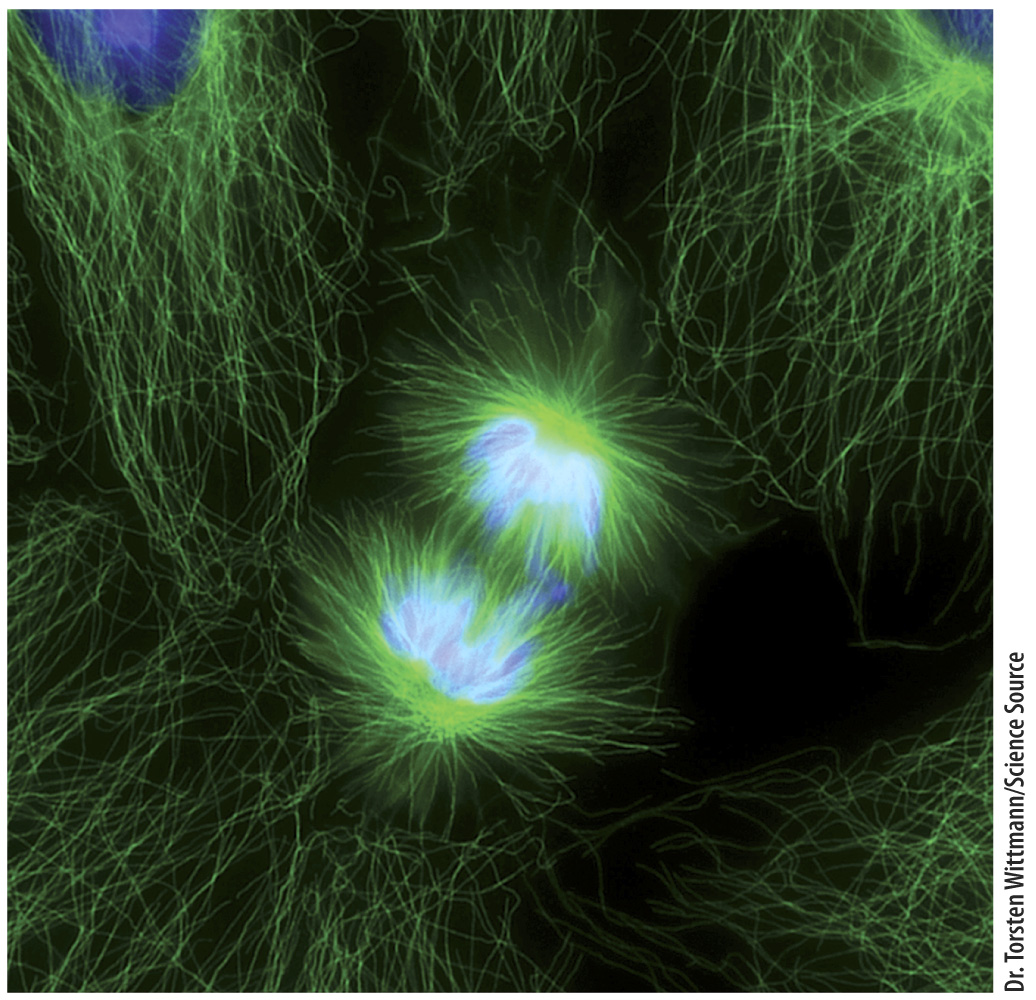Chapter 11 Introduction
CHAPTER 11
Cell Division
Variations, Regulation, and Cancer

Core Concepts
- During cell division, a single parental cell divides into two daughter cells.
- Mitotic cell division is the basis of asexual reproduction in unicellular eukaryotes and the process by which cells divide in multicellular eukaryotes.
- Meiotic cell division is essential for sexual reproduction, the production of offspring that combine genetic material from two parents.
- The cell cycle is regulated so that cell division occurs only at appropriate times and places.
- Cancer is uncontrolled cell division that results from mutations in genes that control cell division.
Cells come from preexisting cells. This is one of the fundamental principles of biology and a key component of the cell theory, which was introduced in Chapter 1. Cell division is the process by which cells make more cells. Multicellular organisms begin life as a single cell, and then cell division produces the millions, billions, or in the case of humans, trillions of cells that make up the fully developed organism. Even after a multicellular organism has achieved its adult size, cell division continues. In plants, cell division is essential for continued growth. In many animals, cell division replaces worn-
Cell division is also important in reproduction. In bacteria, for example, a new generation is produced when the parent cell divides and forms two daughter cells. The parent cell first makes identical copies of its genetic material so that each of the two daughter cells has the same genetic material as the parent cell. The type of reproduction that occurs when offspring receive genetic material from a single parent is called asexual reproduction. Because DNA replication is not completely error free, the daughter cells may carry small genetic differences or mutations compared to the parent cell.
By contrast, sexual reproduction results in offspring that receive genetic material from two parents. Half the genetic material is supplied by the female parent and is present in the egg and the other half is supplied by the male parent and is contributed by the male’s sperm. Eggs and sperm are specialized cells called gametes. A female gamete and a male gamete merge during fertilization to form a new organism (Chapter 42). If the egg and the sperm each contain the complete genetic material from a parent, what prevents the offspring from having twice as many chromosomes as each parent? A unique feature of gametes is that they contain half the number of chromosomes as the other cells in the parent organism. So when fertilization occurs, the combination of genetic material from the egg and the sperm results in a new organism with the same number of chromosomes as the parents. The production of gametes comes about by a form of cell division that results in daughter cells with half the number of chromosomes as the parent cell. As we will see, the products of this cell division are not genetically identical to the parent.
What determines when cells divide and, importantly, when they should not? And what determines which cells divide? To answer these questions, we must understand the process of cell division and how it is controlled. This discussion will lay the groundwork for exploring how cancer results from a loss of control of cell division.